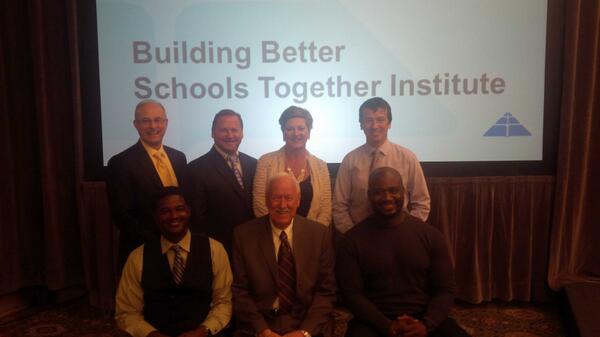My 11 Random Facts
- I am the sixth of eight siblings.
- I was born in Montreal, Quebec and am a diehard Montreal Canadiens fan as a result.
- I am a marathoner and have completed 45 of the 26.2 mile (42.2 kilometre) races.
- I like wearing socks with attitude.
- I am thrilled to be Grandpa to Isabella, Leah, Liam, and Kaiden.
- I watch "It's a Wonderful Life" every year and still well up.
- I won the teen version of a popular TV game show in British Columbia.
- I once ran in a parking lot with Ozzy Osbourne.
- I played in the NBA (Nelson Basketball Association).
- I once had a cigarette kicked out of my mouth by the World Tae Kwon Do champion.
- I led members of the Vancouver Symphony Orchestra through a song.
Cale's Questions
- Ketchup, salsa, or hot sauce? Salsa.
- What is one thing that you are a part of (or believe in) that is 'bigger than you'? Public education.
- What do you do that is great? Not 'good', GREAT. I nap better than most folks. I have two speeds - flat out or flat out.
- If you could live anywhere, where would it be and why? Where I am now. The west coast of Canada satisfies all of my needs and I love coming home after travelling.
- If you were a breakfast cereal, which one would it be? How come? Holy Crap (a local crafted breakfast cereal), because that's what I want people to say after we spend time together.
- What is the one thing (outside of your family) that you absolutely make time for--no matter what? Running, never leave home without my shoes.
- If ________ could be eliminated from your life, you would be stress-free. Delayed flights.
- What is a talent that you have that would surprise those that think they know you well? Deconstructing (okay, demolishing) houses.
- If you were to give yourself a cool pen name or pseudonym, what would it be? Frank Talk
- Your favorite movie is? It's A Wonderful Life
- "If schools closed tomorrow, I would go and be a ____________?" Sports announcer.
My questions
- What was your favourite TV show as a child?
- What cartoon character do you most identify with?
- What ability would you like to have that you don't currently possess?
- What did you pick as your last meal?
- What was the best present you ever received?
- If you could spend one hour talking with one person (living or dead) who would it be?
- What would you buy if money was not a concern?
- What's the best sport to watch live?
- What animal would you be and why?
- What age would you remain at and why?
- What is the best book you ever read?
The 11 victims of my chain blog
- Greg Wolcott
- Don Mrozik
- Tarah Tesmer
- Ken Williams
- Rosa Isiah
- Jill Gough
- Kelly Morton
- Harold Freiter
- Rene Gaudreau
- Carmela Ianni
- Gerry Varty
I hope you'll enjoy the homework assignment as much as I did.





